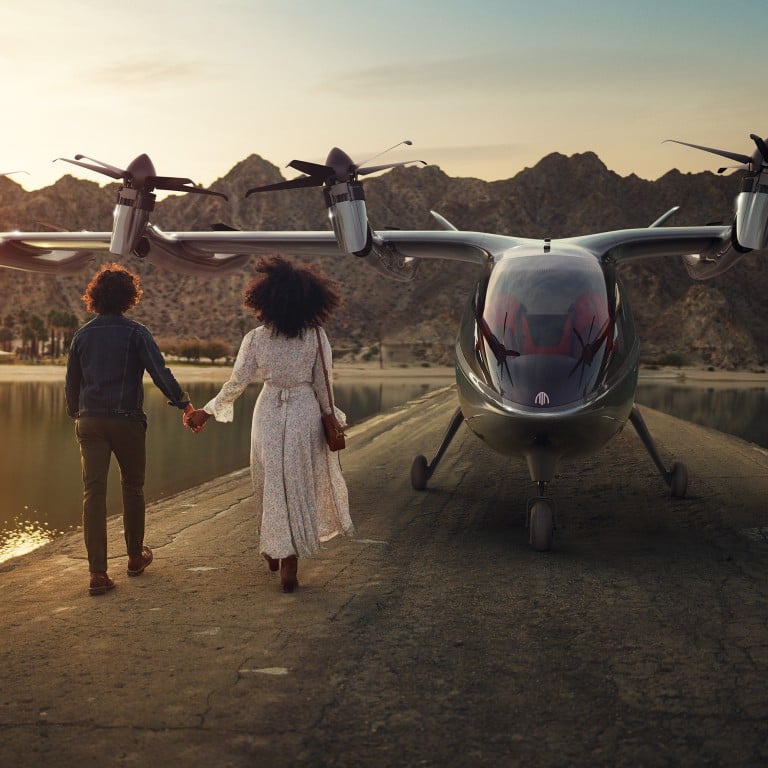Are flying taxis the future of transport? Experts say that passenger drones may take off as early as 2040 – making for a US$1.5 trillion market

- Like something out of The Jetsons, flying cars may become the norm in coming decades – but will require eco-friendly methods and professional pilots to operate
- British company Vertical Aerospace is working with Honeywell and Rolls-Royce, already getting orders from American Airlines and Virgin Atlantic
Proponents of the flying taxi say the technology and the demand are already there – all that stands in the way are doubts over safety and the necessary legal framework.
Within a couple of years, grabbing a taxi could mean travelling over the city rather than through it. Indeed, the vision of a future espoused by the 1960s animated series The Jetsons, in which cars fly rather than drive, may be edging closer, given the number of companies now developing a new generation of VTOL (vertical take off/landing) battery-powered aircraft.
They will still require a professional pilot, but will carry four passengers at 320km/h and over a distance of maybe 160km, ideal for the ride, say, from city centre to airport, a short city-to-city hop, for tourist rides, even for medical evacuations. They may change the look of our skies too – some studies estimate that there could be some 430,000 such aircraft in operation globally by 2040, making for a US$1.5 trillion market.

What’s made this new and buoyant market possible? One key aspect has been the advance in various technologies: in avionics, in strong but lightweight composite materials, and especially in battery density, allowing these craft to have very low CO2 emissions but – crucially for operating over built-up environments – remain virtually silent.
Within a couple of years, grabbing a taxi could mean travelling over the city rather than through it
And then there’s the question of demand: with expected population shifts continuing from the rural to the urban (notwithstanding the contrary pandemic-era trend) predicting that cities will get bigger, more polluted and more congested, getting around will be harder too – at least in a car. Enter these new light aircraft, with rotatable fans mounted on wings, or wingless multi-rotor engines, among the various concepts.
“These aircraft will change the public perception of flight,” reckons Jean-Christophe Lambert, the co-founder and CEO of Ascendance, a French flying taxi manufacturer and operator that expects its hybrid vehicle to be operational by 2025, and who previously managed electric aircraft projects for Airbus.

Indeed, operators reckon that costs per passenger per mile – at around US$1 to US$3 – will quickly be akin to that of a more conventional wheeled taxi. Brett Adcock, co-founder of Archer, a California-based VTOL aircraft developer, notes how electric propulsion also “drives down the significant maintenance costs associated with conventional combustion engines – due to the high number of moving and critical parts, maintenance accounts for some 30 per cent of direct operating costs for traditional helicopters. And by moving from fossil fuels to electrons to power our aircraft, we know there will be a substantial decline in energy-related costs, allowing us to plan for reduced operating costs relative to traditional modes of air transportation.”
These aren’t going to just be toys for rich people but a tech that will quickly be democratised